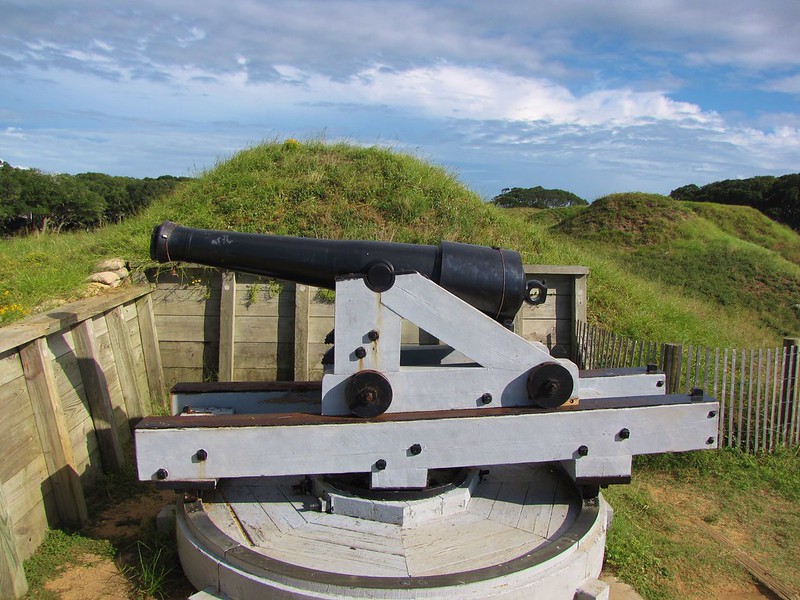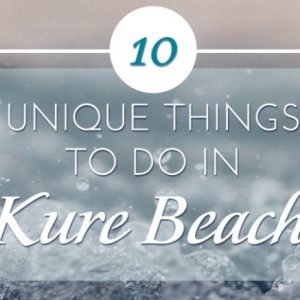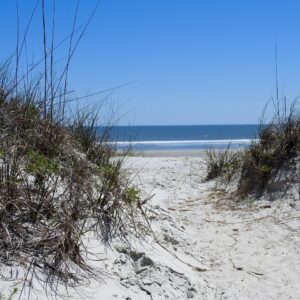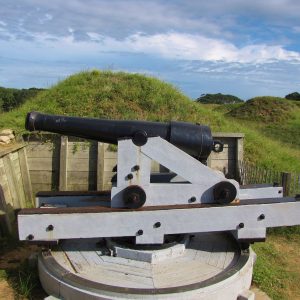History rests at every corner in the beloved coastal haven of Kure Beach. In all the top attractions and interesting locales, you can discover some intriguing tidbits about how the area was developed and who lived here. What should you know about the history of Kure Beach? One of the best ways to explore the area’s history is through the area’s top historical sites. Check out these attractions on your next stay in a Kure Beach vacation rental.

Kure Beach Fishing Pier
The Kure Beach Fishing Pier is a local treasure. At 711 feet, the pier peaks out into the Atlantic with dignity and pride. It even stands as the oldest fishing pier along the eastern US seaboard.
Built in 1923, the pier was originally crafted by L.C. Kure- name not coincidental. L.C. Kure’s father originally owned the majority land that now makes it Kure Beach. One officially established, the area was named after him.
The pier was conceived as more than a fun spot to fish for locals. Built as an entertainment hub, bars, bath houses, restrooms, and homes were built in the immediate vicinity.
But even as these attractions faded and homes dwindled, the pier stood- sort of. Interestingly, the pier underwent multiple major renovations and extensions. In fact, the original pier built in 1923 only stood for a year before it was replaced by a 240’ foot structure. In the mid-1950’s, this pier was again destroyed due to a hurricane and was shortly rebuilt (only to be leveled again in 1984, from another hurricane!).
Parts of the previous structure carried on through the renovations and improvements. Now, the pier is next to an arcade, concession area, and some souvenir shops. The pier is free to walk and fishing off it does not require a license.
The pier is located at 100 Atlantic Avenue.
Fort Fisher
Fort Fisher is one of the best parks to visit near Kure Beach and offers a fascinating flashback to the civil war. The key role of Fort Fisher was to keep the port of Wilmington open and free for confederate blockade runners bringing supplies to inland confederate armies.
The supply route was key in bringing goods to Robert E. Lee’s men in northern Virginia, particularly in the closing months of the war. But before the war officially ended, Fort Fisher was breached in a massive assault on January 15th, 1865. This key turnover is widely considered the final nail in the coffin for a confederate victory, closing off Lee and cutting off much-needed supplies.
Nowadays, Fort Fisher displays a fascinating and pivotal chapter of the closing period of the civil war, and perseverance from the union. In these compelling and transformative times, it is worth revisiting the site for reflection and pause. In the surrounding area, you’ll find about six miles of beach side and trails. It makes up the Fort Fisher Recreation Area.
The fort proper is open Tuesday to Saturday 9 a.m. to 5 p.m. and closed Sunday, Monday, and most major holidays. Fort Fisher is specifically located at 1610 Ft. Fisher Blvd. South Kure Beach. Admission is free.
The Civil War Blockade Runner “Condor”
When you visit the Fort Fisher Recreation Area, look out towards the water. Peer into the horizon line and look shallow, about 700 yards out. If you nailed the right spot, you may see a sign. This is the home of the Condor, arguably the best-preserved Civil War blockade runner in the United States.
Blockader runners were designed for speed. With incredible agility and precision, these boats would sail between blockades, delivering vital supplies to needed groups. Condor was one such ship, masterfully weaving the Atlantic October 1st, 1864- until it wasn’t. The Condor ran aground and, inevitably, sunk into the waters. Onboard was the famous confederate spy, Rose O’Neal Greenhow, who insisted on being rescued. The small lifeboat which carried her capsized shortly after, drowning the small rescue team and Greenhow with it. Legend has it, she was pulled under by $2,000 Confederate bound British gold sovereigns sewn into her dress.
The site now sits in only 24 feet of water. You are able to dive the sunken vessel, but you must receive permission and have proper certification. Confirm with the Underwater Archaeology Branch for details about seeing the sight underwater.
Plan Your Visit
Discover some excellent Kure Beach vacation rentals, contact us today. Book your favorite of our available rentals from the website and see the history of Kure Beach firsthand.






